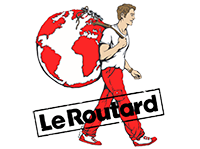The Red Dao Drum Making Craft In Sapa: Essence Of Cultural Heritage
Monday, April 29, 2024
Useful infos

According to tradition, every Red Dao family must have a drum to serve their cultural needs. Recently, the Red Dao drum making craft in Sa Pa has been recognized by the Ministry of Culture, Sports and Tourism in Vietnam as intangible cultural heritage. Alongside the rhythmic sounds of skilled silver carvers' workshops and the lively chatter of Red Dao women embroidering outside their homes, the deep resonance of the traditional buffalo skin drum has become a familiar sight and sound in the tourist villages of the Red Dao in Sa Pa, Lao Cai.
Table of Contents
1. "Trống Nêm" - The sacred Relic of the Red Dao
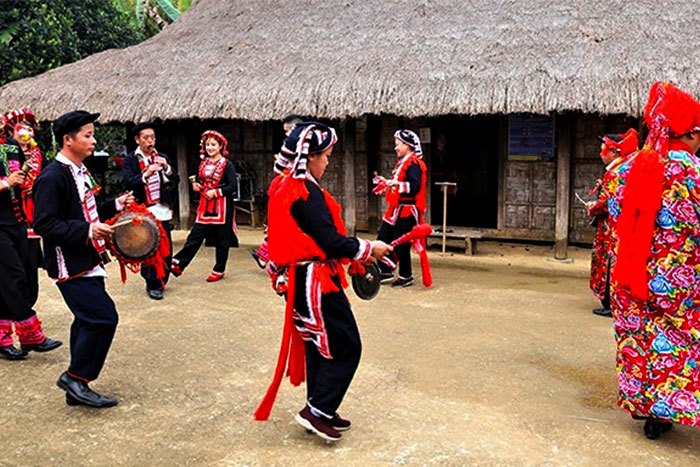
The Red Dao people are one of the five ethnic minority groups living in the Sa Pa town, Lao Cai province. They have a long history of development, with a rich cultural heritage and well-preserved traditions. Alongside this, traditional handicrafts are maintained to serve daily life, religious beliefs, and to create unique products for tourists. When it comes to the traditional craft of the Red Dao people in Sa Pa, the art of making traditional drums in Tả Phìn commune is particularly intriguing to many domestic and international tourists. For the Red Dao, drums are used in various ceremonies such as weddings, funerals, and initiation rituals. The sound of the drum is understood as a connection between the living and the deceased, with the spirits, signaling important events within the family.
Currently in Sa Pa Vietnam, the craft of drum making is practiced in villages like Tả Phìn and Tả Van, where skilled artisans are found, particularly in Tả Phìn and Bản Hồ. The craft of drum making is consistently preserved and upheld by the local people, and Red Dao artisans affirm that drum making is an integral part of their community's culture, ensuring its vitality for generations to come.
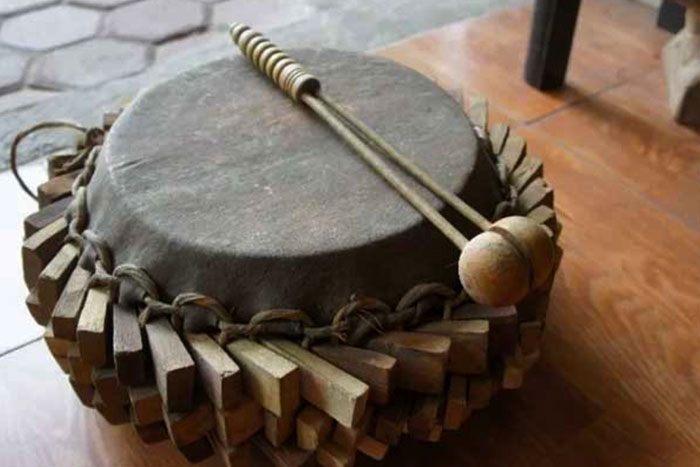
The Red Dao traditional drum is called the "Trống Nêm." It is named as such because around the drum's frame are small wooden pieces with distinctive shapes, resembling delicate petals of a flower. This unique feature allows for easy repair when the drum surface becomes damaged; one simply needs to add more pieces of wood to tighten the drum's surface. Crafting such a drum requires intricate techniques, demanding skilled hands and extensive experience from the artisans. Only then can the drum produce the deep, resonant sound necessary for its role in ceremonies and rituals.
2. The Craftsmanship of Red Dao Drum Making
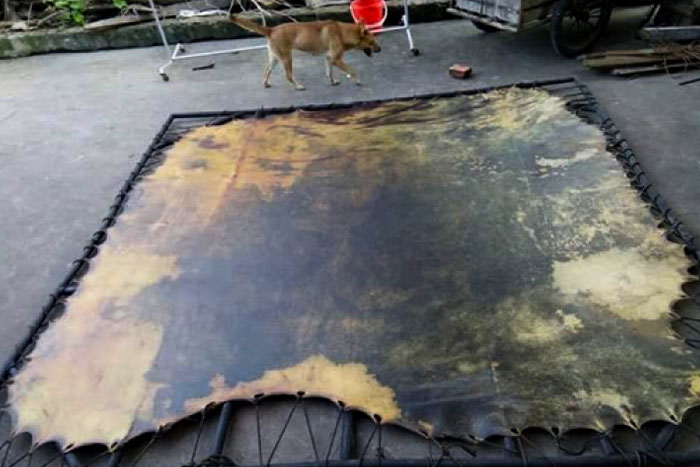
The technique of drum making is passed down through generations of men in Red Dao families. According to tradition, Red Dao people only complete the drums on two specific days of the year, believed to be auspicious for creating drums that are "sacred" and of high quality. Consequently, families unable to make drums themselves will carefully select auspicious dates to purchase drums for their households.
The process of making the Red Dao traditional drum is meticulous and intricate. Red Dao artisans primarily employ manual methods, requiring great skill. The drum surface is selected from buffalo, cow, or Vietnamese chamois hides, but they must be of the necessary thickness; if too thick, they must be shaved down to the appropriate thickness. Subsequently, the hides are sun-dried or left to dry for 10-15 days on the hearth.
Previously, drum surfaces were often made from tiger or leopard hides for their durability and beauty, but today they are typically made from goat or cow hides, and there are even instructional books on drumming techniques. Due to differences in construction and materials between the drum frame and surface, the drum produces a unique sound. The drum emits a deep, resonant tone that carries far, thanks to the layer of animal hair on the drum surface, which retains and regulates the sound, preventing it from being too sharp or harsh. The drumming technique creates a deep, booming sound.
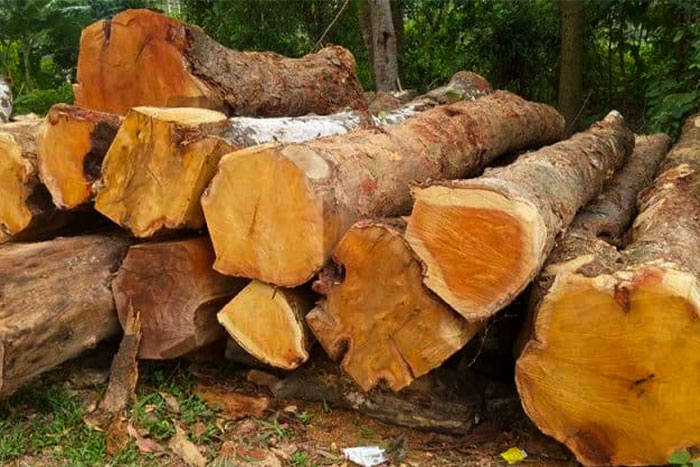
A distinctive aspect of Red Dao drum making craft in Sapa compared to other ethnic groups is that the drum frame is hollowed out from jackfruit wood or drilled through the core, then rounded and polished to ensure the frame is thin, lightweight, yet durable and sturdy. Additionally, while drum surfaces are typically secured to the drum frame with nails, the Red Dao people use small crisscrossed ropes made of bamboo to bind the drum surface to the frame, creating a tightly woven band that hugs the drum surface.
Next, the artisans tightly attach small evenly rounded wooden sticks, called "nêm", to the drum frame to pull the crossed bamboo ropes together, stretching the drum surface taut to produce the desired deep, resonant sound. The small, rounded wooden sticks surrounding the drum frame resemble tiny flower petals, adding to the unique and visually appealing aspect of Red Dao drums compared to drums of other ethnic groups in Vietnam.
A standard drum, when struck, produces a resonant sound that can be heard from afar without being overpowering up close. This is the hallmark of a good drum. A standard drum is one that, when struck, can be heard by those standing far away, yet does not overwhelm those nearby with its sound.
Take a look at Red Dao Herbal Bath
3. Tourism Development in Tandem with Cultural Conservation
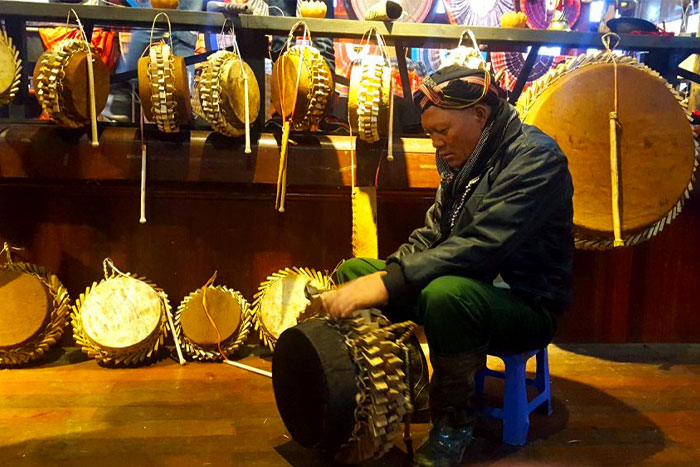
Nowadays, the drums of the Red Dao people serve not only the community's daily needs but also as decorative items, unique tourism products that attract visitors for exploration and learning. Being recognized as a National Intangible Cultural Heritage is a prerequisite for Sa Pa to develop the drum into a distinctive souvenir product for the locality, contributing to the preservation of the unique cultural characteristics of the Red Dao people in Sa Pa. Learning one new musical instrument - the tradition drum of Red Dao - during your trip isn't a bad idea among many Sapa things to do.
These drums vary in size and therefore have different prices. Each small drums range from 500,000 to 900,000 Vietnamese dong, while larger drums can cost between 2 to 3 million dong, and there are even oversized drums priced at up to 10 million dong. Currently, drums are not only serving the cultural needs of the Red Dao people but are also purchased by many tourists, restaurants, hotels, and homestays for display. This has led to a more stable income for drum makers.
These drums continue to play an important role in the spiritual and cultural flow of the Dao people. Therefore, the traditional drum-making profession of the Dao people needs to be preserved, maintained, and promoted.
Come and learn about the Red Dao drum making craft in Sapa, exploring the Red Dao village, observing the daily life activities, listening to the echoes of traditional drum-making families, silver carving, or witnessing skilled hands creating vivid ethnic paintings will make your journey more interesting and allow you to experience the unique traditional cultural values of the Red Dao ethnic group. To ensure a satisfying experience far beyond your expectations, please contact Autour Asia - VIETNAM TRAVEL COMPANY now.
Take a look at:
> Best way to travel from Hanoi to Sapa
> Sapa Travel Guide
> Trekking tour Sapa
> Hanoi Sapa itinerary
> Best way to travel from Hanoi to Sapa
> Sapa Travel Guide
> Trekking tour Sapa
> Hanoi Sapa itinerary
Related travel guide
Other similar articles
CUSTOMIZABLE BY LOCAL EXPERTS
Personalized trip at the original price!
REFUND GUARANTEE
We believe in our work and promise to give you money back.
GOOD PRICE / QUALITY
95% satisfied more than expected!
24/7 LOCAL SUPPORT
We are always available online to provide assistance at any time.
Most read articles
Autour Asia is highly recommended on
Embracing the mission of "Satisfied more than expected" and providing authentic experiences, we have received numerous recommendations on reputable travel forums:























